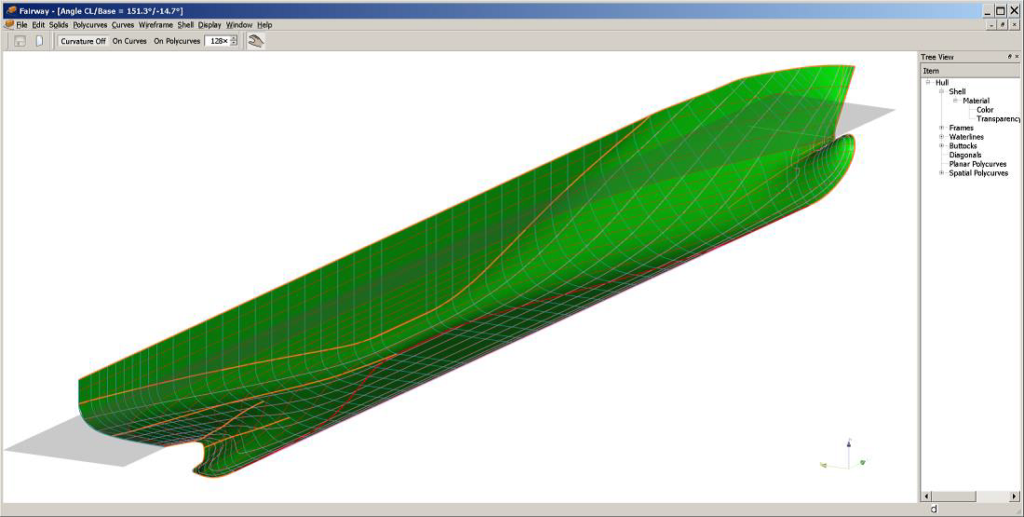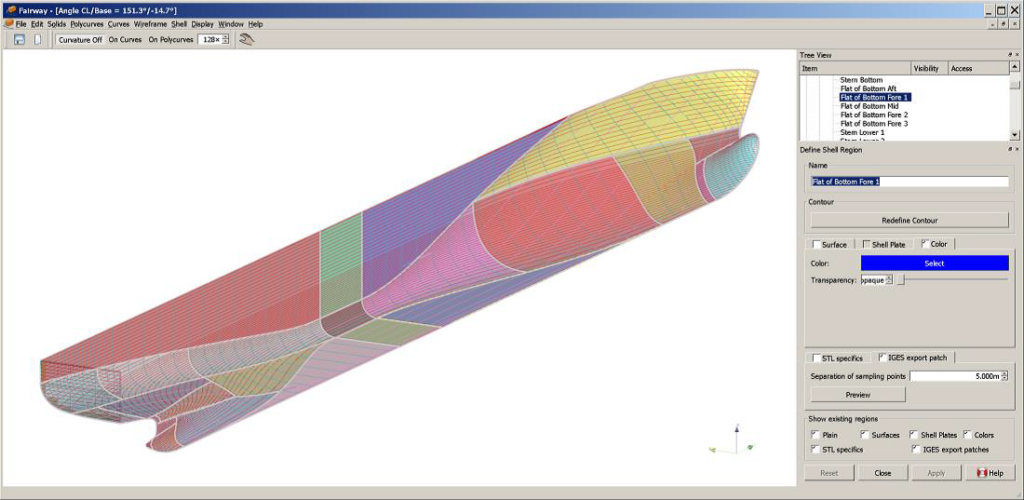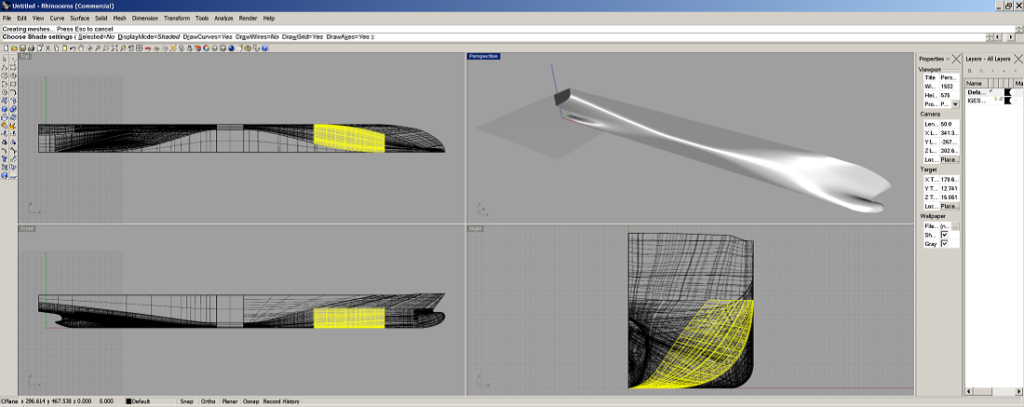Surface export from PIAS/Fairway
Although the NURBS surface method is not very suitable for the hull design process as such, it is widely used for interfacing. So, when a hull design is to be used downstream, e.g. for engineering, CFD analyses or visualization, the Fairway hullform has to be converted to a set of NURBS surfaces.
The first step is identifying larger, four-sided areas, which is essential because its four-sidedness is an intrinsic requirement of the NURBS. The next step is to convert these surfaces to NURBS. In this paper the mathematical nitty-gritty will be omitted, the interested reader is redirected to a special conference paper on this subject.
Anyway, the result is that by some neat mathematical processing, a patchwork of NURBS surface is created with the following properties:
- Guaranteed gap-free along common boundaries between adjacent surfaces.
- The number of vertices of the resulting NURBS surfaces is determined automatically, and is the minimal required to achieve this gap-freeness, as well as accurate representation of the original Fairway surface.
This method is baptized LEANURBS (an acronym for Lowest Effective Amount of NURBS). Its implementation in Fairway is demonstrated by the following sequence of screen dumps, from which the first shows the ship hull in Fairway. The second is a screen dump where the hull is subdivided into four-sided regions and the last one is the IGES file in Rhino.




